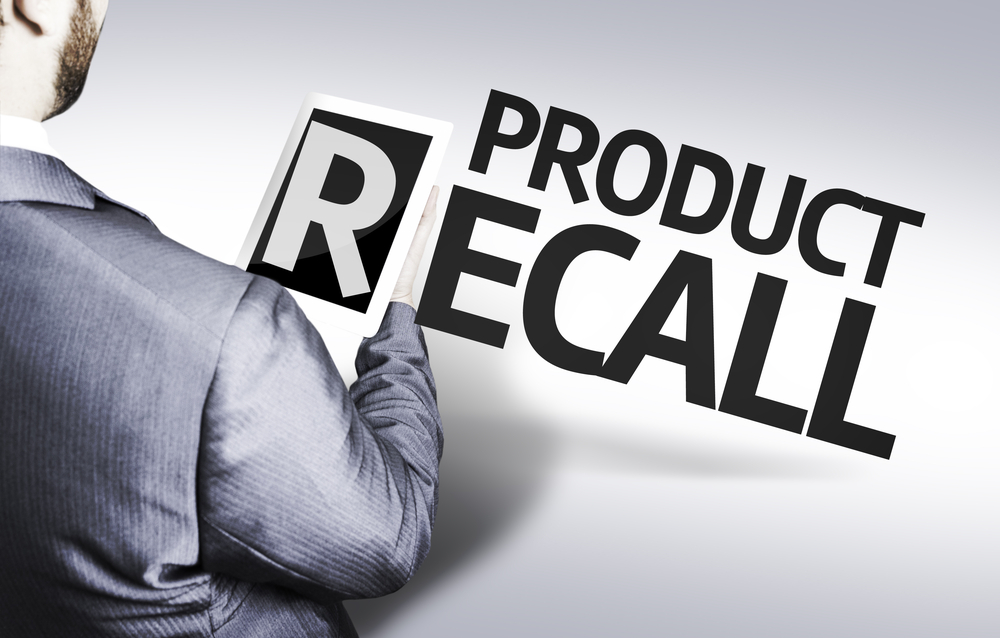When it comes to delivering products, managers at every stage in the process from manufacturing through logistics and supply chain to the retail outlet need innovative solutions to the growing challenges of dealing with product recalls.
It might be a rare occurrence, but so much customer goodwill and loyalty to a brand can hang on the success or failure of a recall. Experienced recall strategists continuously look for opportunities to improve communication and hone their company’s abilities in this area against the ever-changing global and regulatory landscape.
Product recalls take many different forms; some are carried out to protect a brand, some to gather intelligence, but all of them are designed ultimately in the customer’s best interest. The process, by its nature, doesn’t just have to be fast, it also has to be precise.
> See also: When technical meets creative – the four principles of digital product design
When complaints or product recalls warrant the removal or withdrawal of a product from the supply chain, having a proactive product retrieval plan in place can help ensure that those affected, from the manufacturer right through to the customer, stay protected.
When evaluating the most effective method for product retrieval, even if that means collecting a product from a customer’s home the following five factors should be considered:
Speed
In the event of a customer complaint, product recall, or a competitive situation, retrieving products as quickly as possible is imperative. Delayed responses have the potential to expose manufacturers and retailers to possible legal action, brand damage and regulatory scrutiny.
Without a professional field team in place, many companies have to disrupt day-to-day operations and lose time and money trying to manage and coordinate retrieval logistics.
When setting up the appropriate response, consider the frustrations that customers will feel if they have to repeatedly call for assistance, or if, when they do connect, they reach someone who can’t answer their questions, or even provides advice that is inappropriate to the issue. Make sure that the product retrieval team is properly trained, informed and has the necessary communications skills to deal with queries.
Accuracy
With a company’s image and reputation on the line, accurately retrieving all affected products is vital for the integrity of the brand. If products remain on shelves, in the warehouse or in homes, a company’s liability increases along with the increased risk of litigation and brand damage. To prevent lost sales on non-affected products, companies should ensure only the affected goods are removed and not all products with the same UPC.
While navigating potentially complex regulations it is important to account for all products and maintain the integrity of a product for additional testing and analysis. This requires a strict chain of custody and a plan to properly document, execute and complete a retrieval event.
Efficiency and effectiveness
Due to the nature of product retrievals, it’s difficult for companies to fully prepare in advance. Typically, when a product needs to be removed from the market, manufacturers and retailers have little warning and must act immediately.
With a complex supply and distribution chain, it may not be financially feasible to hire full-time staff to manage the retrieval and many companies attempt to use internal resources to manage the process.
However, taking staff away from their normal work interrupts day-to-day business and can actually delay the retrieval process, resulting in higher costs. Third-party solution providers who focus on retrievals are an alternative and often more efficient method of implementing a product retrieval.
Scalability
During a retrieval, the number of units that need to be retrieved from anywhere in the world and along the supply chain can vary from one extreme to the next. Companies can experience events that require them to pick up just one product at a customer’s home or alternatively millions from retailers and distributors globally.
Because retrievals are not always a part of an organisations’ day-to-day activity, it can be costly and prohibitive to hire and maintain a global field force or to require existing staff to assist. When a situation does occur, companies need the flexibility to handle any type of event anywhere in the world at a moment’s notice.
Quality
In any product retrieval situation a brand’s reputation is already at risk. To protect the integrity of the brand, manufacturers and retailers must ensure that representatives picking up product act as an extension of their team. It’s important that companies, particularly third parties, meet the highest quality standards and document every step of the process, from transporting and storing products with a secure chain of command, to handling subsequent product testing or product recalls in a regulatory compliant manner.
> See also: How Data as a Service can modernise the data supply chain
Clear communication is everything. It takes no time for one customer’s complaint to spiral, particularly given the power of social media and the ability for messages to go viral in today’s global marketplace.
These steps should help to guard against the pitfalls of a product recall, and ensure it is implemented strategically and with clear communication. We recently carried out research with YouGov amongst over 2000 adults in Great Britain which showed that 69% agreed that companies who plan a product recall carefully and take action before they are forced to do so by law are considered smart.
And two thirds of respondents agreed that a product recall shows the company values quality. Which proves the point that potentially a recall can be worked so successfully that it turns a negative customer experience into an opportunity to enhance and preserve brand loyalty.
Sourced from Farzad Henareh, European Vice President, Stericycle ExpertSolutions







